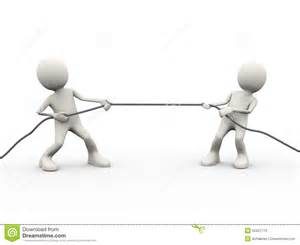by jcooper131 | Dec 18, 2018 | Compromise, Conflict, Disputes, Ethics, Houston Mediation and Arbitration, Intervention, Mediate Conflicts, Mediation, Negotiation, Solving Conflicts, Third Party Mediator, Workplace Conflicts
 Merry Christmas and Happy Holidays
Merry Christmas and Happy Holidays
We at CDC Integrated Services wish to take a moment to thank everyone who chose us to aid them with the issues brought to us during the past year. We are grateful for your business and wish all of our clients a safe and peaceful new year.
Peace and Goodwill to all.
From Jerry Cooper and the CDCI team
by jcooper131 | Aug 20, 2018 | Client Retainers, Houston Mediation and Arbitration
Benefits of a Professional Conflict Resolution Services On Retainer: Dozens of different conflicts confront people in a corporate setting every day. It’s a fact of life, and with millions of people are in the workforce today, it’s not going to get any easier. Some companies have such strife among the workers that the work environment becomes hostile, and getting things done is difficult at best. To avoid such potentially disastrous consequences, it is important to have options, including access to a professional conflict resolution service already on retainer. The following are the benefits that will come with hiring a professional to facilitate/mediate conflicts that fall outside the normal give and take dynamic.
Conflict Solution Companies Put Employees First: When human interaction in the workplace causes strife, workers can find themselves in difficult situations. Most companies have policies that direct employees to seek the assistance of their supervisors when experiencing difficulties, but what if the supervisor or manager is the source of the conflict?
The outside conflict solutions company companies put employees first and make sure that they understand that facilitators/mediators are not there to cause anyone to lose their job, or causing the company any problems. Conflict solution professions know how to defuse disputes in ways that allow the parties to move forward more productively. Their goal is to breakdown the arguments, remove false assumptions, open communication between disputants, and expand options. To do it correctly takes time, and that is a resource not available to those trying to get the job done.
The Goal is Peaceful Resolution: Going forward, you’ll find that a conflict resolution company achieves peaceful outcomes at a very high rate and at surprisingly modest costs when compared to traditional avenues such as litigation or arbitration. The goal here is to make sure that anger and other frenetic emotional responses are not the norms. Emotional responses drive negative behaviors that make the arguments more difficult to overcome, and conflict professionals can help with calming things down before strife causes those involved to quit. Turnover produces many negatives of its own, and facilitating/mediating disputes can have a positive effect on the “revolving door”.
Quick Recovery: When conflicts are not resolved promptly and fairly, the parties involved will build and hold grudges, and at some point, those grudges will boil over. They will feed lingering discontent, and will not want to work things out when future disagreements arise. Conflict solutions professionals focus on efficiently resolving conflicts and problems for their client company. Their goal is to make sure that conflict resolution creates an agreement between the parties, and the dynamics of the group is restored. A powerful benefit of having a conflict solutions company on retainer is it thwarts the paralysis of uncertainty, allowing a healing process to begin much sooner.
Empowering Your Workers: Following along with other benefits, it’s imperative to understand that a professional conflict resolution company empowers workers by providing them the means to resolve the conflict and stay in control of the process. They educate the workers and unite people instead of dividing them. They focus on hearing all sides. They work towards resolving issues that are going to help not only the immediate issue(s) but will offer a blueprint for employees going forward. Managers and employees will be empowered to deal with conflicts before they get out of hand. Ultimately, over time a cultural shift may occur making the use of the outside professional necessary only on an exception basis.
The Results Matter: As stated above, the most obvious benefit is the high degree of success. Moreover, once implemented, the willingness of employees to use the process under the guidance of the neutral third-party increases, and the number of intractable disputes decreases.
Want to know more? Please contact us for more information. We can be reached at 832-452-8537
by jcooper131 | Oct 29, 2017 | Arbitration, Mediation, Solving Conflicts

“People who think they know everything are a great annoyance to those of us who do”. (Isaac Asimov)
Mediators who do not allow the principle of self-determination to guide the mediation’s outcome will risk seeing that mediation fail.
Mr. Mark Baer, a mediator who writes interesting articles, posted a recent study about mediation and shared it with us on his LinkedIn page. The study focused on family law mediation in California, and the data developed as part of that study identified an interesting fact. In the state of California the field is saturated with retired judges and attorneys. Having wrapped up their legal career these judges and attorneys turned to mediation as a second career.
I found several other facts in this study to be interesting as well. Their careers and experiences did not prepare them on how to use mediation effectively. The study reinforced the basic fact that good mediation combines skill, training, and experience. The researchers concluded in fairly blunt terms that mediation requires skills that …”judges and lawyers do not possess by virtue of having decided cases in a courtroom…”, and in that state surprisingly few retired judges and lawyers have any formal mediation training.
The study further disclosed that there is a higher instance of these mediators pressing or directing the parties in these mediations towards a preferred or suggested outcome, such that a higher number of mediations didn’t hold up, and the parties to a dispute reverted back to litigation. It confirmed what I had seen at an anecdotal level. The dry nature of the data understates the burdens these failures place on those who find themselves back in court
Mr. Baer has written before about the risks attorneys run when they, under the guise of mediation, begin to subjectively evaluate the actions and positions of the parties and attempt to lead to or suggest a particular settlement. It is a risk that I have written about as well in my posts.
A successful mediation changes the perceptions and relationships of the parties in dispute. It breaks down the distrust that the parties have towards each other, and helps rebuild trust. Successful mediations encourage the parties to decide the outcome(s) they want through consensus by using the process provided by the mediator.
When the process is set in motion correctly, the parties are able to step away from entrenched positions and it allows them to look at alternatives; and looking at alternative solutions is at the heart of successful mediations.
The message here is to think carefully about how you choose a mediator or a third-party neutral to assist in resolving any potential dispute. Ultimately, you need to have confidence in the outcome of any negotiation, and be well satisfied that it sets things back in balance to the point you can move forward.
We at CDCI follow this principle and encourage you to contact us if you have any questions. You can reach us at 832-452-8537, or contact us through info@cdci-mediation.com. We also respond to texts messages.
by jcooper131 | Sep 15, 2017 | Houston Mediation and Arbitration

Unravelling Conflict
I recently read an interesting article in one of the mediation blogs I follow. In that article was a phrase that caught my attention, which reads, in part, “when parties agree to mediate, the search for solutions is not a sign of weakness”. This phrase brought home in a simple way the challenge all mediators face.
Once you have done this a time or two you discover several ways to get things started so that each side talks about the issues that brought them to the table that day. The challenge, though, is getting them to ask the kind of questions they need to ask of the other party that will lead them away from an entrenched defense of their point of view.
In order to explore alternatives the parties need to reach a level of confidence that allows the parties to begin the examination of alternatives. They can only do that by becoming curious about/interest in the other party’s point of view.
A good mediator prepares the parties for the mediation by setting the stage, and in doing so gets the parties to buy into small agreements about the process that will be used. These small agreements occur where the mediator talks about mundane things such as the mechanics of the mediation, his or her role, the expectation of good manners and courtesy, and other such things. During this process, the mediator also explains that this is “their” mediation, and they control the outcome.
At this point the mediator also reminds them in a deliberately low-key manner that they will be the negotiators, they will be the authors of the final agreement, and at that point encourages them to ask questions after each side has stated the reasons for being there.
In my mediations I take several opportunities to make the parties comfortable with the idea of asking questions so that when the parties actually begin to engage each other so that, as mediator I can, where appropriate, encourage the pursuit of questions intended to invite an exploration of solutions without the parties seeing that as a threat or sign of weakness.
In other parts of my business I talk about the importance of building a framework from which questions can be asked and explored. I also emphasize why asking questions is important in my book The Monday Morning Checklist, A Guide for Experienced Leaders in a Busy World. The book is available through Amazon at: http://amzn.to/2f08DIH.
by jcooper131 | Aug 26, 2017 | Houston Mediation and Arbitration

Abigail Adams, the wife of John Adams our second president, was his intellectual equal. They wrote each other frequently when they were apart because they trusted each other’s judgement. In one of her letters she wrote, in part, “…How difficult the task to quench the fire and the pride of private ambition, and to sacrifice ourselves and all our hopes and expectations to the public weal! How few have souls capable of so noble an undertaking!”
Ethics and ambition will be in conflict with each other if a leader is not the master of his ambition. There are two kinds of leaders; one kind keeps his/her integrity intact, and the other type of leader does not.
The one who does keeps it close and guards it. It is OK if it is a little tattered around the edges and maybe holding a patch or two, but it is essentially all there. The one who does not keep his integrity intact sheds pieces along the way so that when that leader reaches the position he or she holds, there is a real question whether or not they can conduct themselves in an ethical manner.
I think the verdict is clear. Just in the past five years you can find real life examples of corporate leaders who failed in spectacular fashion.The seeds of their destruction was a result, in large part, to their unethical conduct. They chose the easy path instead because it looked like the fastest way out of a dilemma. Yet solutions that often seem to be a way out of a dilemma create opportunities for inappropriate behavior.
It leads to policies that, instead of creating innovation and growth, function as a shield allowing directors and managers to engage in behavior that is self-serving and unethical.
How many of you have heard the phrase honest to a fault? All us deal with a lot of noise in popular culture. With great sound and fury we demand that our leaders must be as close to perfect as possible. Yet, even the best of us lead imperfect lives, and the successful leader is one who catches his/her mistake and quickly corrects it. Good leaders do not allow gaps to form between the error and the action to correct the mistake.
How can you be sure you are doing everything you can to keep your integrity intact? Review the absence of the word “morality” in the business environment. This word gets very little attention in within the business community and this is ultimately harmful. This is not about forming judgements or replacing standards of behavior. It is about the moral dimensions of what they are doing. A leader cannot build an ethical culture in his organization without understanding the foundation on which ethics rests.
Want to know more, call us at 832-452-8537, write to us at info@cdci-mediation.com.
by jcooper131 | Apr 17, 2017 | Houston Mediation and Arbitration
 In my book, which will be available through Amazon Kindle in about three months, if not sooner, I talk about the fact that many companies say they are customer focused, but they aren’t. They say they are committed to under-promising and over performing. They point out, often with much fanfare, that they have strong compliance programs and have a solid ethical foundation. They spend millions of dollars each year selling that message – until things fall apart.
In my book, which will be available through Amazon Kindle in about three months, if not sooner, I talk about the fact that many companies say they are customer focused, but they aren’t. They say they are committed to under-promising and over performing. They point out, often with much fanfare, that they have strong compliance programs and have a solid ethical foundation. They spend millions of dollars each year selling that message – until things fall apart.
It turns out it’s a fancy façade on a structure that is deeply flawed. One day the façade collapses and the structural flaws are glaringly obvious. A few months ago, we turned on the TV or opened the newspaper and read how Wells Fargo had, over a number of years, stolen money from millions of accounts, and now we see United Airlines in the midst of a disaster the scope of which will not be known for months.
It is safe to say that the credibility of both companies is non-existent. Wells Fargo is a company that has been around for more than 140 years, and they will do what it takes to rebuild its reputation. It will be a long-term effort but they have every reason to succeed. United Airlines presents us with more questions than answers at this point. But in its own way this failure is every bit as stunning as something pulled from the pages of a melodrama.
When I discuss ethics and integrity training with executives and managers , I am often confronted by a check the box mentality. I sometimes need to remind these men and women that they work in a high risk environment and the existence of compliance programs, ethics policies, written standards of behavior, and even training programs are not guarantors of success. That compliance failures and ethical lapses are just one bad decision away from erasing all hard-won gains. These failures often occur because they don’t look at ethics and integrity with a focus on the human factor.
Want to know more about our approach to ethics and integrity training? I invite you to take a few brief minutes and visit our website. Our approach is designed to reduce the impact on the time of executives and managers. Take a moment to view our upcoming training event in early May, and we will be happy to answer any questions you have.
by jcooper131 | Mar 2, 2017 | Houston Mediation and Arbitration

In a recent article I read, the author talked about how technology is disrupting the way work is done both nationally and internationally. Companies like Facebook and Uber have, within a few short years, achieved market values greater than 80 percent of the companies on the S&P 500. They have corporate structures, processes, and systems, but unlike the large corporations that have been around for decades, they do not have thousands of employees.
More than just the computer, technology is disrupting business models across the world and rendering many traditional methodologies obsolete. Brick and mortar stores like Macy’s and jcpenney are struggling to create new workable models in an environment where technological innovation is forcing a brutal transformation.
Add to this many companies are merging, and their organizations are growing more complex as their size increases. Managing these larger, more complex organizations successfully is a daunting task. Managing Ethics and Integrity issues in these demanding times also grows more challenging. The near constant demand to control costs in a low growth, low profit world puts intense pressure on companies to find savings. Many times training programs of all kinds become an easy target; ethics and integrity training included.
This unrelenting pressure claims high-profile victims every year. Whether it’s Wells Fargo Bank’s epic ethics failures, or MD Anderson’s failure to follow basic rules in placing millions of dollars in contracts involving a state of the art technology created by IBM, the number of companies that fail to comply with their compliance obligations grows each year. There is an area of risk that risk managers content with almost daily. Regardless of the fact that most companies have a range or resources that focuses on compliance and ethics, they do not provide certainty. The number of companies that must work under a Consent Decree or Deferred Prosecution Agreement give proof to that reality.
The list of companies that fail to meet requirements and standards grows every year, and companies struggle every day to avoid being added to the list. The question one needs to ask is if the old business models are being transformed as we speak, why do so many companies still rely on canned training programs that drive managers and employees to check the boxes at the appropriate places?
If the example of Wells Fargo and dozens of other companies teach us anything, it is that existing programs do not drive the cultural changes necessary for modern complex organizations to succeed long-term. We at The Ethics Workshop believe that a series of relatively small incremental steps, consistently applied and reinforced over time, will sow the seeds for real cultural changes in this demanding environment. We invite you to reach out to us and consider having a brief conversation. You have nothing to lose and potentially something to gain. To learn more please visit our website to view these offerings in more detail.
Each month I remind my readers in and around the Houston area that I support a business cooperative called Services Cooperative Association. SCA is an non-profit entity that helps people become successful business owners and entrepreneurs and it does this through regular workshops and a variety of training options. If you know someone with the desire to start a business, invite them to visit the website.
Food for Thought: Character cannot be developed in ease and quiet. Only through experience of trial and suffering can the soul be strengthened, ambition inspired, and success achieved. (Helen Keller)
by jcooper131 | Feb 8, 2017 | Houston Mediation and Arbitration
 All across the country in companies large and small annual reviews occur between a manager and the employees reporting under him or her. In the course of conducting this performance review, one of the areas that almost all performance appraisals include is how well the manager and employee communicated.
All across the country in companies large and small annual reviews occur between a manager and the employees reporting under him or her. In the course of conducting this performance review, one of the areas that almost all performance appraisals include is how well the manager and employee communicated.
Whether the person being evaluated gets a very good score or something less, the inevitable result is that the evaluation will leave room for improvement and will include suggestions to that effect.
But what if you find yourself involved in communication that is not intended to get things done, at least in a way that will advance the goals and objectives? What about communication that does the opposite? Communication isn’t about getting things done in work environments where conflict goes unresolved. These individuals begin talking over each other, going around each other, and working at cross purposes. The consequences of unresolved conflicts is significant.
Communication becomes the vehicle by which the combatants in a conflict build their defenses. They defend their positions in a conflict before any consideration about how it affects the work. Any criticism or complaint, no matter how small, becomes an imperative that must first be defended against and then challenged.
In this environment, encouraging and positive statements must be maximized, and body language must fully complement the language being used. When there is a disconnect between the words and the speaker’s body language, any effort to deconstruct the defenses of employees in a conflict will quickly lose credibility.
Social scientists have developed a significant body of empirical data showing that nonverbal communication often sends messages more clearly than words. When clients ask me to assist in resolving workplace conflicts, this is one of the areas I focus on almost immediately. I emphasize the importance of choosing carefully how words are used, by whom, and where, and review nonverbal elements that can undermine their efforts.
There are many ways that body language can undermine someone’s efforts to resolve a dispute. One of the suggestions I frequently make to managers and supervisors is always to hold those discussions where everyone sits in a straight-backed chair. Nothing robs a manager’s credibility quicker than the parties in conflict sitting in the manager’s office in “visitor chairs”, and the manager is in a chair where he ca swivel and look away or lean back. Nothing creates a more powerful message of “I am not as involved in this as you” or even worse, “I am really being patient here, so let’s hurry it up”.
We at CDC Integrated Services are ready to answer questions or to meet for more detailed discussions. Visit us here to find your answers.
by jcooper131 | Dec 27, 2016 | Houston Mediation and Arbitration

Turning the Wheel of Conflict
In mediation disputes the past does matter. Earlier this fall I wrote about the Wheel of Conflict, a concept introduced in a book written by Professors Bernard Meyer and Christopher Moore. In their analysis of conflict, a series of common themes interact with each other; some more heavily than others. Yet, they all play a part in the dynamics of a conflict.
Spin the wheel and the arrow will eventually stop on “history”. What does the history of the parties to conflict tell a mediator about the nature of that conflict? An experienced mediator knows that this is a key element in any conflict and it must be described and expressly recognized so that any decisions reached build important elements of continuity that have value in resolving the conflict.
People that view conflict through the prism of their experience in the business world can have a distorted understanding of how conflict is resolved. For many it is a problem that is taken outside the normal processes so that work can move forward. The fact that it is often moved outside of the normal processes sometimes results in people involved a conflict not having the opportunity to resolve underlying issues; which can color or adversely impact all future relationships involving the parties to the original conflict.
Sometimes the parties to a conflict stay involved all the way to the resolution, and still those underlying issues can remain unresolved. Add to this dynamic the reality that many companies, being sensitive to accountability and diligence concerns, choose binding arbitration which generally solves the immediate issues, but does little to address the root cause of the conflict in the first place.
Some conflicts are easier to resolve than others. Family feuds can last beyond an individual’s lifetime, and the damage can be incalculable. In business disputes the goal is to resolve the conflict in way that preserves the relationship so that the work can move forward without further disruption. They are not necessarily easier to resolve, but the simple fact that people’s careers and livelihoods are often on the line tends to focus one’s attention on search for ways to solve disputes in a business environment.
What the parties to the conflict need to know about the other party matters. Failure to understand the motivations and values of the other party(s) to the conflict will lead to assumptions about the other party that are almost always wrong. The drawing of conclusions will create negative biases that can impede or damage progress, delay resolution of the issues, and even bring about long-lasting harm to a business relationship.
The above cannot be overstated. Whether you Kellogg protecting a cereal brand, Mattel defending a line of dolls, or Oracle protecting its software, the battles are costly, time-consuming, and damaging to the reputations of both parties in these types of disputes.
Mediation is often the overlooked avenue that prevents conflicts from escalating to the point they become a legal precedent or a case study in business schools, and these outcomes are legacies most companies want to avoid.
Want to know more about prevent or mitigating business conflicts? Contact us at www.cdci-mediation.com or by E-mail at info@cdci-mediation.com. We can also be reached by telephone at 832-452-8537.
I strongly support small business development. I do this through the Services Cooperative Association here in Houston. SCA helps people become successful business owners and entrepreneurs. If you work in Houston, Texas have breakfast with us at the Lakeside Country Club on Wednesday, January 11th, 2017. We will be hosting the 34th Annual Economic Forecast. Contact me for a ticket at a reduced price, or learn more about the event here.

by jcooper131 | Dec 27, 2016 | Houston Mediation and Arbitration

Before decisions comes the problem solving
I live and work in Houston Texas as do many of the people who read my letters and follow my blog. Many of you living here work for companies with a focus on or an involvement in oil and gas production. Others work in companies not related to oil and gas, but represent a number of other industries. No matter which industry, most of the companies over a certain size, have the following characteristics in common:
A compliance program conforming to the regulations and rules promoted by either the federal or state government.
An ethics policy
A credo stating the company’s foundational principles
Procedures and guidelines that incorporate clear standards of behavior
Training programs that direct managers and employees in understanding their obligations across a range of ethical issues.
For many companies these are important processes that go back decades. Companies spent tens of thousands of dollars to set up and implement these processes and spend thousands of hours and a significant amount of money each year managing these processes, analyzing and reporting on their adherence to and compliance with these requirements.
Last week I stood next to a client looking at a section of the Interstate that passes in front of his office about 100 yards away and some three stories below us. He noted that the real estate we saw in front of us had changed a lot in the 30 plus years he had been at that location, and that the way he did business had changed even more.
We had just finished a meeting where we were discussing some changes to the way his company approaches ethics training and it was a conversation that had some difficult moments for both of us because his company spent a lot of money to install and implement the processes that are in place and the training that supports it. He was still not convinced of the benefits to his operations.
As we stood there, I asked him to think about the fact that he and I are surrounded by companies that have all the above processes, including his company; all of them trying to get it right. Yet the landscape is dotted with companies that operate under a Consent Decree or Deferred Prosecution Agreement imposed by the Department of Justice because in spite of the above, they didn’t get it right.
That is the harsh reality of today’s compliance environment. It does not matter whether your company is in the oil & gas industry, banking, or retail, none of these processes and programs offer any level of certainty. Given the number of companies that fell short and paid sizable fines, and must now conduct their operations under the watchful eye of the government, the question becomes how to avoid being added to the list. My client thanked me for giving him such a warm and fuzzy feeling and said that perhaps we did need to talk more on the ideas we discussed, and he invited me back in the New Year to talk more.
The people who manage and administer a company’s compliance program well appreciate the difficulties they work under. For them it is a constant search for behaviors behind decision-making that do not conform to the standards, working to re-orient, and train managers and employees not to take the wrong action. Compliance professionals know full well that somewhere someone is taking a shortcut, intimidating an employee, or engaging in any number of actions that lead to unethical conduct, which if not corrected, will result in adverse consequences that are almost always severe and expensive.
Here at the Ethics Workshop, a division of CDCI we help our clients focus on the human factor behind these processes and procedures. In our presentations and training modules we look for ways to have conversations that promote an organic approach to ethics. To learn more please visit our website to view these offerings in more detail.
If you read my letter on a regular basis you know that I support those starting new businesses or looking to grow their business, and I offer that support through an organization called the Services Cooperative Association. The SCA is hosting an economic forecast on January 11, 2017 and the keynote speaker will be Mr. Chris Brown, Houston City Comptroller. Also speaking is Professor Sophi Haci of the economics department of Houston Community College who will give an overview of the Texas economy. It will the 34th year that SCA sponsors this event and I invite you to visit the announcement here to learn more about it and put it on your calendar.
Thought for the day and one of my favorites: “Failure isn’t fatal, but failure to change might be” (John Wooden).
 Merry Christmas and Happy Holidays
Merry Christmas and Happy Holidays








